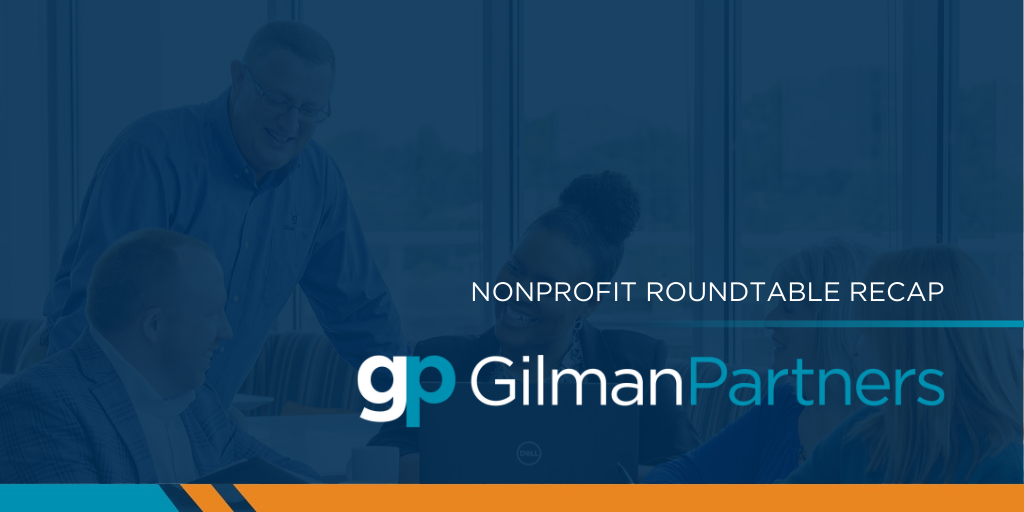Gilman Partners’ HR Leadership Practice brought together a dozen executive-level HR leaders to talk about the priorities and initiatives they’re focused on as they look toward 2024. Here are the highlights from the roundtable discussion:
Internal Mobility
Several of the HR leaders talked about the need to clarify career paths within the organization. This not only helps in retaining employees but also ensures they don’t need to seek external opportunities for professional growth. The emphasis is on breaking down departmental and organizational silos that might hinder employees from smoothly transitioning between roles. One HR leader referred to this process as “internal relocation.”
Training & Development
The HR leaders talked about how important training and development is to retaining and upskilling their workforce. Two participants shared their experience applying for funding through the Ohio TechCred that reimburses organizations for investing in workers who are residents of Ohio. One leader shared that professional learning doesn’t even have to mean taking a class. She encourages leaders in her organization to spend one day a month meeting with business and thought leaders across the region to get different perspectives and ideas.
Succession Planning
Given the prevalence of Baby Boomers in key roles looking towards retirement, succession planning has taken a front seat. HR leaders are not only encouraging top-level succession plans but are also working collaboratively throughout the organization to ensure continuity in roles at all levels. The focus is on evaluating the impact of potential departures and identifying temporary or permanent replacements. During the discussion on succession planning, participants shared their tools and methods for assessing talent within their organizations. Several use a traditional nine-box assessment, but one participant noted the importance in tracking whether employees identified as “high performers” met that expectation in the coming years. She shared that she has switched from assessing “potential” in team members to looking for “momentum.” Potential is often thought of as static, but momentum can be improved.
Technology and AI
HR leaders are actively looking to enhance technology capabilities and incorporate artificial intelligence (AI) into their strategies for 2024. This involves upgrading HRIS systems, streamlining workflows, and utilizing AI for tasks such as crafting job descriptions and formulating interview questions. One leader is encouraging her managers to utilize AI technology to help add details to their team’s performance evaluations. They can ask an AI tool (like Chat GPT) for ideas on how to help a team member who struggles with deadlines or who lacks empathy when dealing with others. Managers don’t have to use the AI suggestions verbatim but can pull from the ideas to incorporate into training and development plans or evaluation language. Two leaders shared they are using AI-based HR assistants to help employees find answers to internal HR policies. Employees can ask the AI assistant for details about their organization’s 401k match or how to submit a reimbursement from a client meal. The assistant pulls data from the company’s handbook and policies to serve up the results, helping employees get answers quickly and saving time for HR leaders.
Compensation
While many organizations still offer annual cost-of-living increases, a growing trend is the adoption of meaningful quarterly performance bonuses for hourly employees. One side effect of this might be that openly discussing compensation can motivate employees and drive improved performance. Some organizations are exploring the concept of departmental or team-based quarterly bonuses tied to achieving KPIs instead of giving them to individuals and others are planning to give a higher percentage of bonus dollars to high performers to drive retention from those they most want to keep. Finally, one participant told the group her organization is sharing annual compensation statements with all employees so they can see the total value of their comp package – from uniforms costs to benefits.
Benefits
HR leaders are actively reevaluating and enhancing benefit packages to align with employee needs. Some participants mentioned they have expanded parental leave policies, drawing positive feedback even from those not utilizing the benefit. Organizations are exploring creative solutions like tuition reimbursement and student loan repayment, leveraging resources like the CARES Act to help cover the expense. One leader shared she is reviewing the benefits her organization offers to see if they are actually being used. She learned 75% of employees don’t use their PTO time (leading to burnout) and only a very small percentage take advantage of the volunteer time off their organization provides. In response to this, two leaders shared they have developed surveys for employees to see which benefits they most care about and then adjust benefit offerings to match the need.
In summary, HR leaders are navigating the evolving landscape by promoting internal mobility, prioritizing professional development, implementing succession plans, embracing technology and AI, rethinking compensation strategies, and enhancing benefits based on employee feedback. These initiatives reflect a forward-looking approach aimed at fostering a resilient and thriving workforce in the years ahead.




